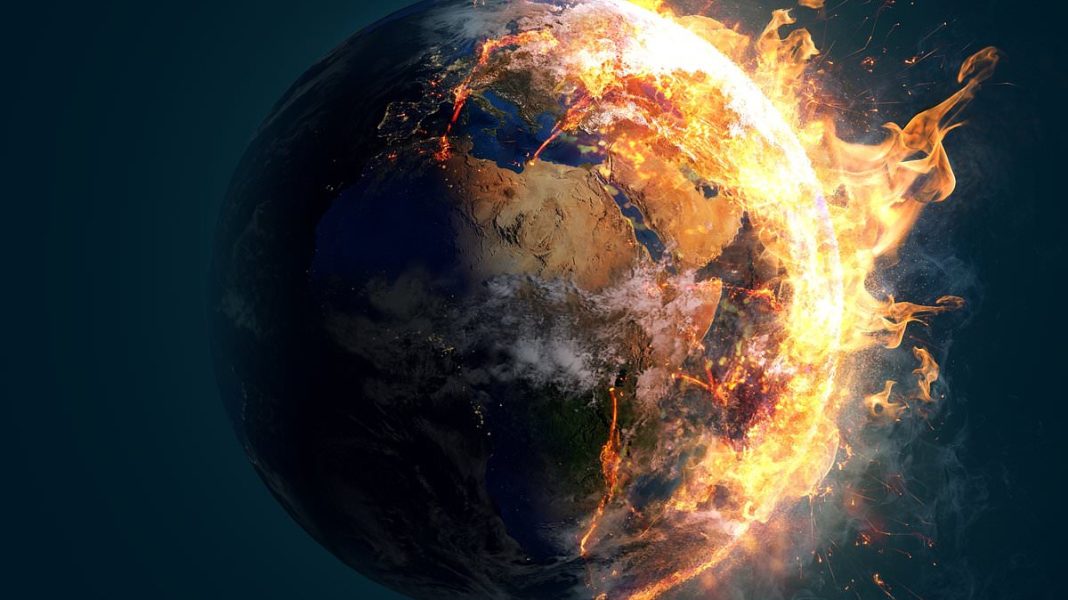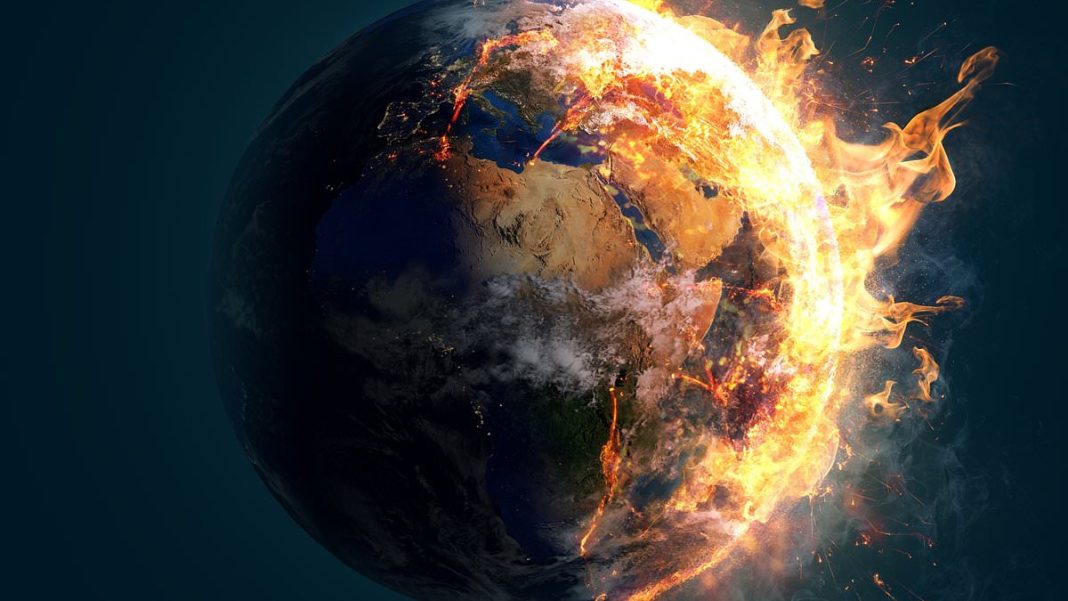Window to avoid 1.5°C of warming to close in 3 YEARS, scientists warn,
Time is running out to curb climate change, scientists have warned in a major new report.
There are now only 130 billion tonnes of carbon dioxide left in the ‘carbon budget’ – the amount of carbon that can be emitted before the world hits the critical limit of 1.5°C of warming.
If the world keeps producing greenhouse gases at the current rate, that will be gone in just three years.
What’s more, the remaining carbon budget to avoid 1.6°C or 1.7°C of warming will be burnt through in as little as nine years at current rates.
The report found that 2024 experienced ‘alarmingly unexceptional’ high temperatures, reaching 1.52°C (2.74°F) warmer than the pre-industrial benchmark.
Overall, 1.36°C (2.45°F) of that warming can be directly traced back to human activity, with the remaining 0.16°C (0.29°F) coming from natural fluctuations.
A single year above 1.5°C of warming doesn’t mean that the Paris Agreement has been breached, but it does show that the world is getting dangerously close to this threshold.
Professor Joeri Rogelj, co-author and climate scientist at Imperial College London, says: ‘The window to stay within 1.5°C is rapidly closing. Emissions over the next decade will determine how soon and how fast 1.5°C of warming is reached.’
The annual Indicators of Global Climate Change study combines the work of 60 scientists to measure 10 key indicators of climate change to give a broad picture of the planet’s health.
The data shows that we are rapidly approaching the warming limits set out by the Paris Climate Agreement and that the remaining ‘carbon budget’ is dwindling.
Professor Rogelj explains that the carbon budget is worked out from the basis that ‘the global warming we experience is largely determined by the total amount of carbon dioxide that is ever emitted into the atmosphere by human activities.’
He adds: ‘That means that if we want to keep warming from exceeding a specific level, there is a limited amount of carbon dioxide that can ever be emitted.
‘The remaining carbon budget estimates how much of that amount remains when looking at where we stand today.’
By looking at current warming rates and how much the planet warms per tonne of CO2 emitted, the researchers calculated that 130 billion more tonnes of CO2 will bring humanity to the 1.5°C limit set out in the Paris Agreement.
At the current rate, the world releases the equivalent of around 53 billion tonnes each year.
To put that into perspective, that is the same as 5.2 million Eiffel Towers of CO2 being pumped into the atmosphere every single year.
If emissions are not rapidly reduced to more sustainable levels, there will be no way to avoid exceeding 1.5°C and triggering more severe and dangerous consequences.
Even though 2024 was more than 1.5°C hotter than the pre-industrial average, that does not mean the Paris Agreement has been breached.
This international treaty binds its signatories to ‘pursue efforts to limit warming to 1.5°C’ taken as an average over several decades.
But, looking at the climate on a wider time scale shows that we are quickly approaching a time when this will be breached.
The average surface temperature on Earth for the decade between 2015 and 2024 was 1.24°C (2.23°F) hotter than it was before the industrial revolution.
Professor Rogelj told MailOnline that ‘all’ of this change is due to humans putting more greenhouse gases in the atmosphere.
The study found that only 0.02°C (0.04°F) of warming over the last decade has any non-human causes, which Professor Rogelj calls a ‘negligible’ amount.
By comparison, during the transition out of the last Ice Age – one of the fastest periods of natural warming in the planet’s history – the warming rate was about 1.5°C (2.7°F) per thousand years.
That is equivalent to just 0.02°C (0.04°F) of warming per decade, compared to 1.22°C (2.2°F) of human-caused warming per decade today.
As greenhouse gas emissions continue to rise, the rate of heating is increasing right up to the present day.
The rate of global heating seen between 2012 and 2024 was double that seen in the 1970s and 1980s.
At these rates, the researchers estimate the world will breach the Paris Agreement’s limits on average warming by around 2030.
This is already causing measurable changes in Earth’s climate, especially in the oceans which absorb 91 per cent of the excess heat trapped by greenhouse gases.
Warmer waters lead to rising sea levels, faster ice melt, and more violent storms.
Dr Aimée Slangen, research leader at the NIOZ Royal Netherlands Institute for Sea Research, says: ‘Since 1900, the global mean sea level has risen by around 228 mm.
‘This seemingly small number is having an outsized impact on low-lying coastal areas, making storm surges more damaging and causing more coastal erosion, posing a threat to humans and coastal ecosystems.
‘The concerning part is that we know that sea-level rise in response to climate change is relatively slow, which means that we have already locked in further increases in the coming years and decades.’
The researchers behind the report say that action needs to be taken to reduce the rate of greenhouse gas emissions to avoid more severe effects of climate change.
Professor Rogelj concludes: ‘How much carbon budget we have depends on the level of warming that we want to limit global warming to, and how much risk of higher warming we are willing to allow.
‘Overall, however, for any temperature limit that aims to avoid dangerous levels of climate change, it essential that we stop emitting climate pollution as soon as we can.
‘Every year that reductions are delayed adds to this cumulative problem.’






